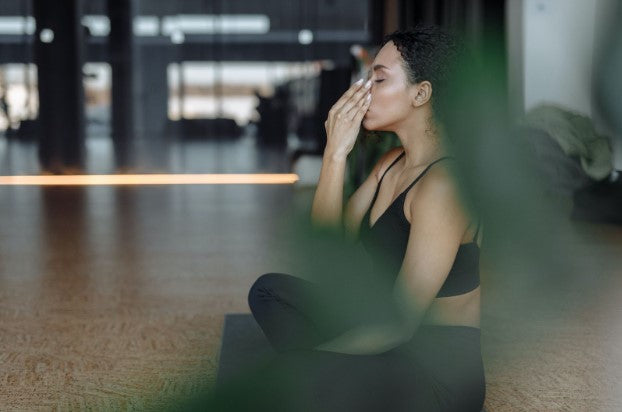It’s more than likely that you’ve heard the phrase “take a deep breath” at one time or another. This phrase is often used when attempting to get someone to calm down and there’s a good reason for it!
Breathing can be powerful when it comes to taking control of our stress. One deep breath alone can help to tell the brain that it’s okay to calm down and relax a bit. So, while breathing isn’t something we necessarily need to think about as the minutes pass by, doing so has the potential to reduce stress and make you feel a lot better.
While deep breaths alone hold a lot of power when it comes to stress, what about taking it up a notch with intentional breathing exercises? We’re here to explain a little bit about how to use breathing exercises to reduce stress. Next time you encounter a stressful situation, whether it’s a work deadline or shocking news, you’ll be equipped with the right tools to get through it.
What Are Breathing Exercises?
A good place to start when it comes to breathing exercises is with an explanation of what they are. Breathing exercises are essentially a series of controlled breaths in and out that help to bring on relaxation and calmness. That applies to both the mind and body.
Whether it’s meditation or a yoga class, you’ve probably been prompted to complete a breathing exercise of some sort at some point in time. (Learn more about meditation before sleep next) One of the best things about breathing exercises is that you can do them anywhere at any time. So, if you feel the need to calm yourself down you can quickly do a breathing exercise. The longer the breathe the more airflow and the more we can calm ourselves down.
How Do Breathing Exercises Help to Reduce Stress?
When you become anxious or stressed your breath becomes shorter. This causes a restriction in airflow which can then cause us to become tense or uncomfortable. When you practice breathing exercises to reduce the stress you begin to breathe deeply through the nose and the breath gets pushed out of the stomach. That usually means there’s an abundance of airflow throughout the body.
As the lungs fully expand and air flows throughout the body the “rest and digest” system becomes activated. This tells the body to relax and can help when it comes to particularly stressful situations.
Types of Breathing Exercises to Reduce Stress
Ready to learn more about some of the different types of breathing exercises? Let’s dive in!
Breath focus technique
The first breathing exercise we will discuss is the breath focus technique. This technique uses focus words to help you feel relaxed. You will want to do this type of breathing for anywhere between 10 and 20 minutes.
Start by getting comfortable and be mindful about your breathing without changing it in any way. Then start to switch it up by taking some regular and then some deep breaths. Put one hand on your stomach and take note of how it rises and falls with each breath you take.
You can then start to bring in the word or phrase that will bring you comfort. Doing so will help to relax you even further and melt your stress away.
Diaphragmatic breathing
Diaphragmatic breathing or belly breathing starts with you lying on your back and your head on a pillow. One hand should go below your rib cage and the other on your upper chest. Breath in through your nose and take note of the feeling of your stomach expanding in your hand. You will then exhale with pursed lips and tighten your stomach muscles.
Pursed lip breathing
Pursed lip breathing is great for helping you to slow down the pace of your breathing. Start by keeping your mouth closed and inhaling through your nose for a count of two.
With pursed lips, start to slowly exhale for a count of four. As you continue to inhale and exhale with these counts in mind, you’ll get better at it and will be able to slow the breath down with ease. This technique is especially great when completing exercises such as lifting or stair climbing.
Lion’s breath
You might have heard of a lion’s breath when taking a yoga class. This technique requires you to be seated, either cross-legged or sitting back on your heels.
Press your hands against the knees with your fingers spread and inhale through your nose with your eyes wide open. At the same time, you will open up your mouth and stick your tongue out as far as you can close to your chin. You will then take a big exhale making a loud “ha” sound. It should feel like a big release!
Alternate nostril breathing
This breathing technique can be great for helping you to relax and calm down. It has been known to lower the heart rate.
Once again you will start in a seated position. Press your first and middle fingers towards your palm and extend your remaining fingers. You will then use the extended thumb to close the nostril and inhale through the other one. Close that nostril using your pinky and ring fingers. Then release the nostril and let out an exhale.
Keep repeating this pattern for about five minutes to get optimal results.
Box breathing
One of the most common types of stress-reducing breathing is box breathing! That’s partly because it’s so easy to learn and can be incredible when it comes to helping you calm down.
Start with a four-count exhale to empty your lungs followed by a four-count hold with your lungs empty. Then inhale for a count of four followed by a four-count hold with your lungs full of air for a count of four. Repeat this process until you feel yourself start to relax.
Mindful breathing
Breathing isn’t something we have to think about, but can a little mindful breathing help us to refocus the mind? Absolutely.
Whether it’s a calming sound or word, choose something to repeat silently as you begin to inhale and exhale with intention. If you start to notice your mind drifting in the process, mindfully take another breath and bring it back to the present.
Resonance breathing
Resonance breathing allows you to get into a relaxed state by lying down and gently breathing in through your nose for 6 counts. Gently exhale for another 6 counts allowing the breath to leave your lungs slowly.
You can keep doing this for up to ten minutes after which you can take a few minutes to reflect and focus on how your body feels.
Simple breathing exercise
If you want to keep things simple when it comes to your breathing exercises try taking a deep inhale through your nose and exhaling through your mouth. As you breathe out the air, relax your jaw while pursing your lips. A whooshing sound may come out as you do this.
Keep repeating this breathing pattern until you find yourself in a relaxed state.
Tips for Practicing Breathing Exercises
Regardless of how experienced you are with breathing exercises, it’s something that anyone can try. Here are some of our favorite tips to remember as you’re giving these breathing exercises a shot.
Practice regularly
While you might feel like it’s only necessary to do a breathing exercise when a stressful situation takes place, doing them regularly can be even more beneficial. You might start your day with deep breathing or end it with your exercise of choice. It will help you in your daily life and will also help you know exactly what to do when a stressful situation comes to your hair.
Get comfy
When it comes time to do your breathing exercises ensure you’re comfortable for the best results. Find a comfortable position whether it’s seated or lying down and make sure you feel supported. It’s usually best to close your eyes or gaze downward.
Pay attention
Take a second during your practice to notice how the breath feels. It might feel long, short, shallow, or like it’s coming from the throat. There’s not necessarily a right or wrong breath, but being aware of it can help you to be even more in tune with how the breath affects how you’re feeling.
Welcome sensation
As you complete your breathwork you might notice that you feel a strong emotional or physical sensation. Understand that this is common when it comes to breathing exercises and make note of how you’re feeling. If you feel the need to pause then don’t be afraid to do so! It’s best to take the time you need to reflect and then return to your exercises when you’re ready.
Breathing for Stress Management
Different breathing exercises are going to work better than others depending on your preferences which means it’s a good idea to give more than one a try. Use the above tips and stay consistent in using breathing to help reduce your stress. The more you practice the better prepared you will be the next time a stressful situation gets thrown your way.
Interested in finding more out about vagus nerve stimulation and how it can help you manage stress? Learn more about Xen by Neuvana today!





